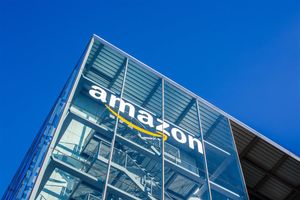
Infrastructure construction company Primoris (NYSE: PRIM) announced better-than-expected revenue in Q3 CY2025, with sales up 32.1% year on year to $2.18 billion. Its non-GAAP profit of $1.88 per share was 38.8% above analysts’ consensus estimates.
Is now the time to buy Primoris? Find out by accessing our full research report, it’s free for active Edge members.
Primoris (PRIM) Q3 CY2025 Highlights:
- Revenue: $2.18 billion vs analyst estimates of $1.85 billion (32.1% year-on-year growth, 17.7% beat)
- Adjusted EPS: $1.88 vs analyst estimates of $1.35 (38.8% beat)
- Adjusted EBITDA: $168.7 million vs analyst estimates of $135.7 million (7.7% margin, 24.4% beat)
- Management raised its full-year Adjusted EPS guidance to $5.45 at the midpoint, a 9% increase
- EBITDA guidance for the full year is $520 million at the midpoint, above analyst estimates of $500.6 million
- Operating Margin: 6.3%, in line with the same quarter last year
- Free Cash Flow Margin: 6.8%, down from 9.6% in the same quarter last year
- Backlog: $11.06 billion at quarter end, up 113% year on year
- Market Capitalization: $7.64 billion
“Primoris delivered a record third quarter for revenue and earnings, demonstrating the strength of our end markets and our sustained successful execution in serving our customers,” said David King, Chairman and Interim President and Chief Executive Officer of Primoris.
Company Overview
Listed on the NASDAQ in 2008, Primoris (NYSE: PRIM) builds, maintains, and upgrades infrastructure in the utility, energy, and civil construction industries.
Revenue Growth
A company’s long-term performance is an indicator of its overall quality. Any business can experience short-term success, but top-performing ones enjoy sustained growth for years. Over the last five years, Primoris grew its sales at an incredible 17.1% compounded annual growth rate. Its growth beat the average industrials company and shows its offerings resonate with customers, a helpful starting point for our analysis.
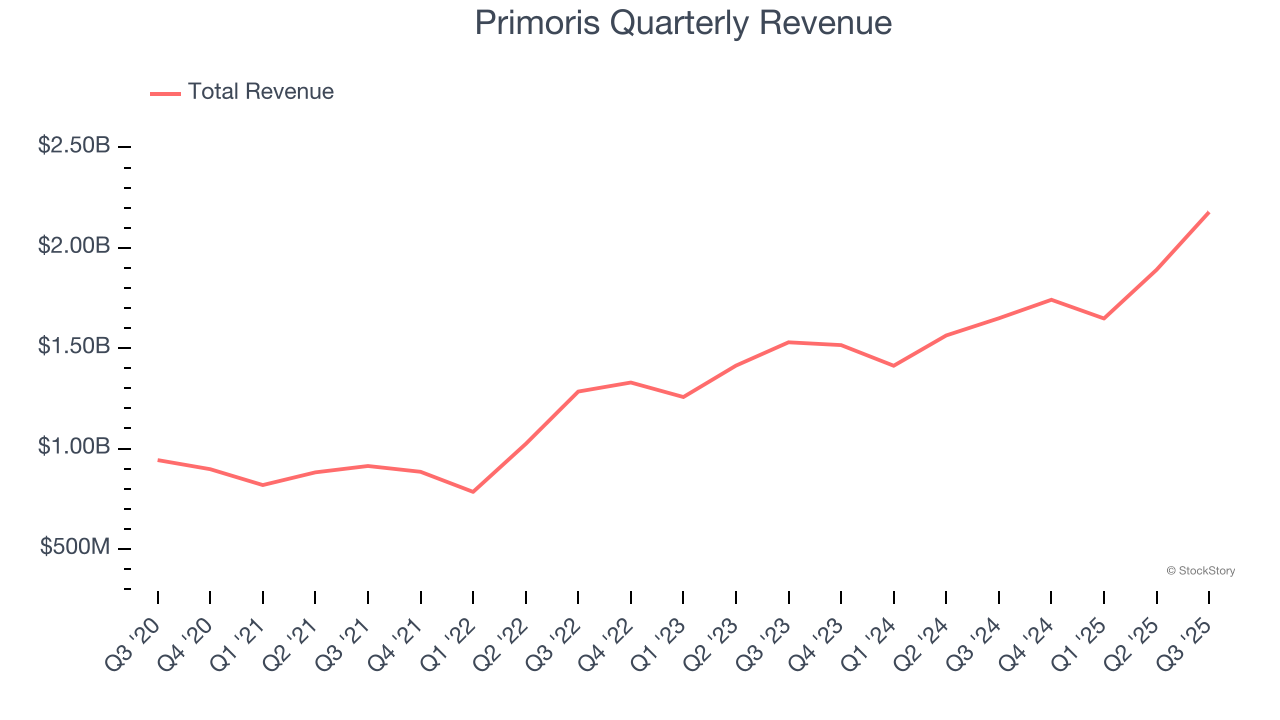
Long-term growth is the most important, but within industrials, a half-decade historical view may miss new industry trends or demand cycles. Primoris’s annualized revenue growth of 16.1% over the last two years aligns with its five-year trend, suggesting its demand was predictably strong. 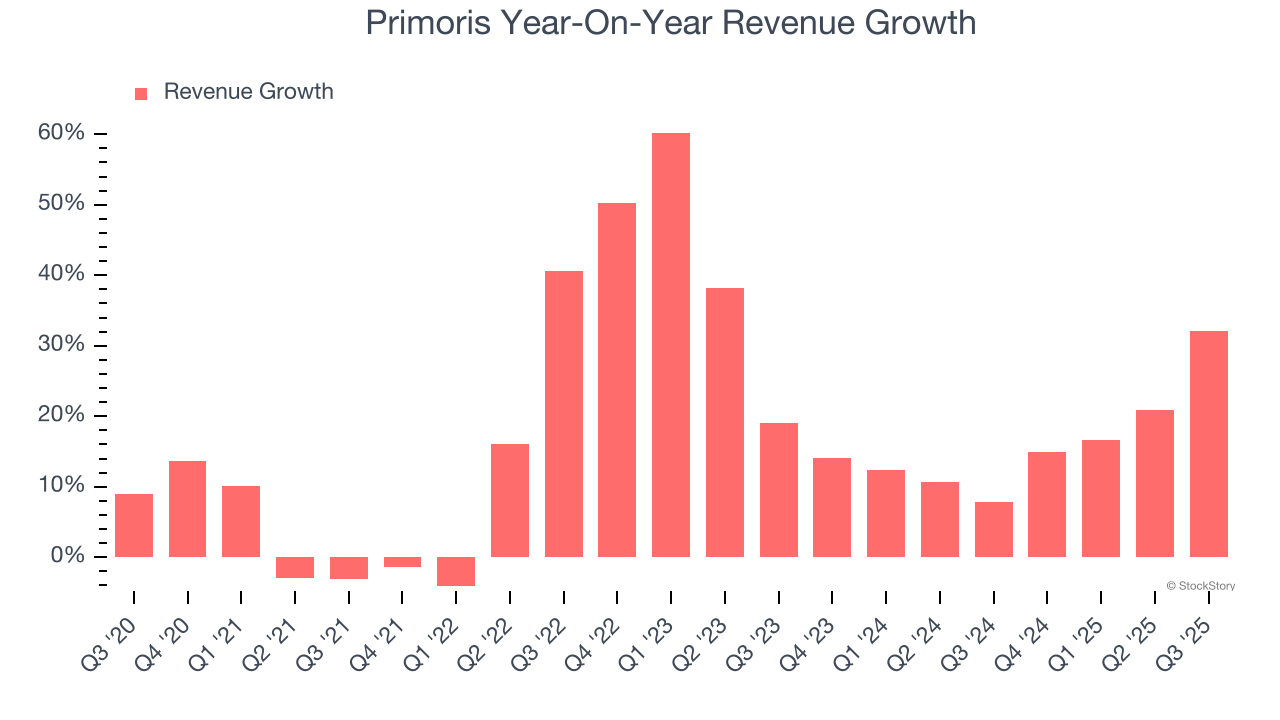
We can better understand the company’s revenue dynamics by analyzing its backlog, or the value of its outstanding orders that have not yet been executed or delivered. Primoris’s backlog reached $11.06 billion in the latest quarter and averaged 143% year-on-year growth over the last two years. Because this number is better than its revenue growth, we can see the company accumulated more orders than it could fulfill and deferred revenue to the future. This could imply elevated demand for Primoris’s products and services but raises concerns about capacity constraints. 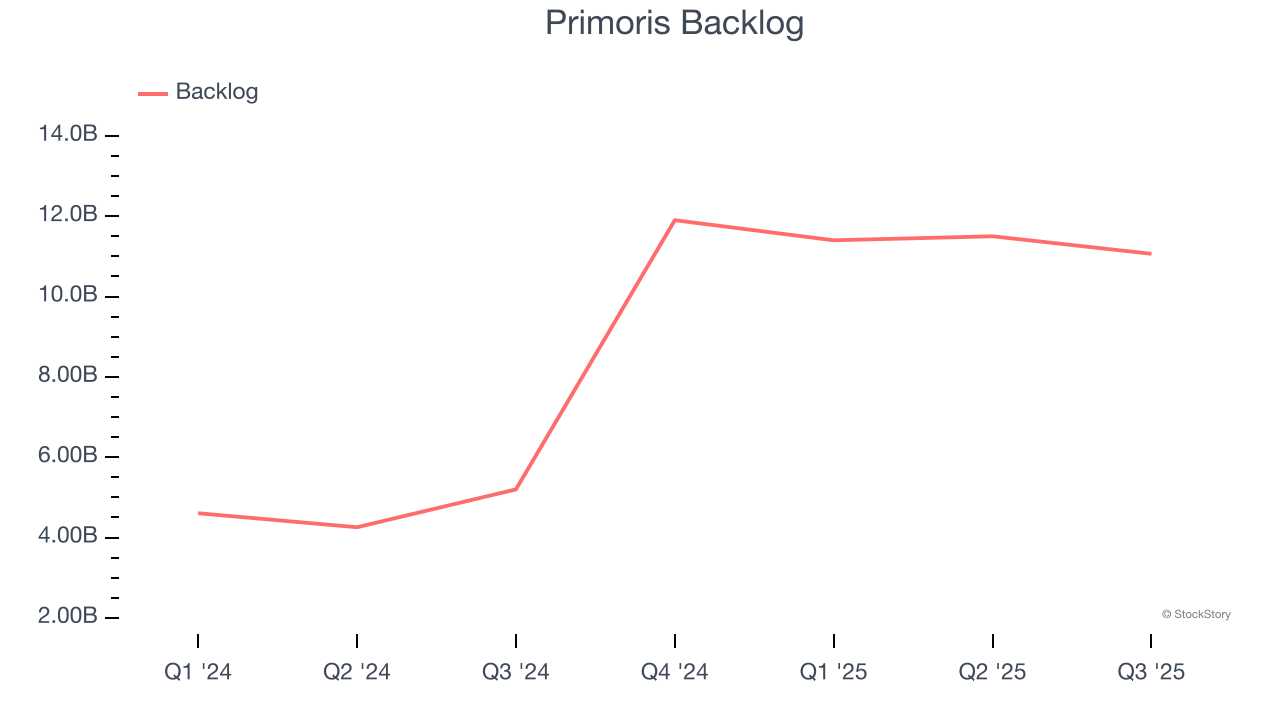
This quarter, Primoris reported wonderful year-on-year revenue growth of 32.1%, and its $2.18 billion of revenue exceeded Wall Street’s estimates by 17.7%.
Looking ahead, sell-side analysts expect revenue to grow 2.1% over the next 12 months, a deceleration versus the last two years. This projection is underwhelming and indicates its products and services will see some demand headwinds. At least the company is tracking well in other measures of financial health.
While Wall Street chases Nvidia at all-time highs, an under-the-radar semiconductor supplier is dominating a critical AI component these giants can’t build without. Click here to access our free report one of our favorites growth stories.
Operating Margin
Primoris’s operating margin might fluctuated slightly over the last 12 months but has generally stayed the same, averaging 4.9% over the last five years. This profitability was paltry for an industrials business and caused by its suboptimal cost structureand low gross margin.
Analyzing the trend in its profitability, Primoris’s operating margin might fluctuated slightly but has generally stayed the same over the last five years. This raises questions about the company’s expense base because its revenue growth should have given it leverage on its fixed costs, resulting in better economies of scale and profitability.
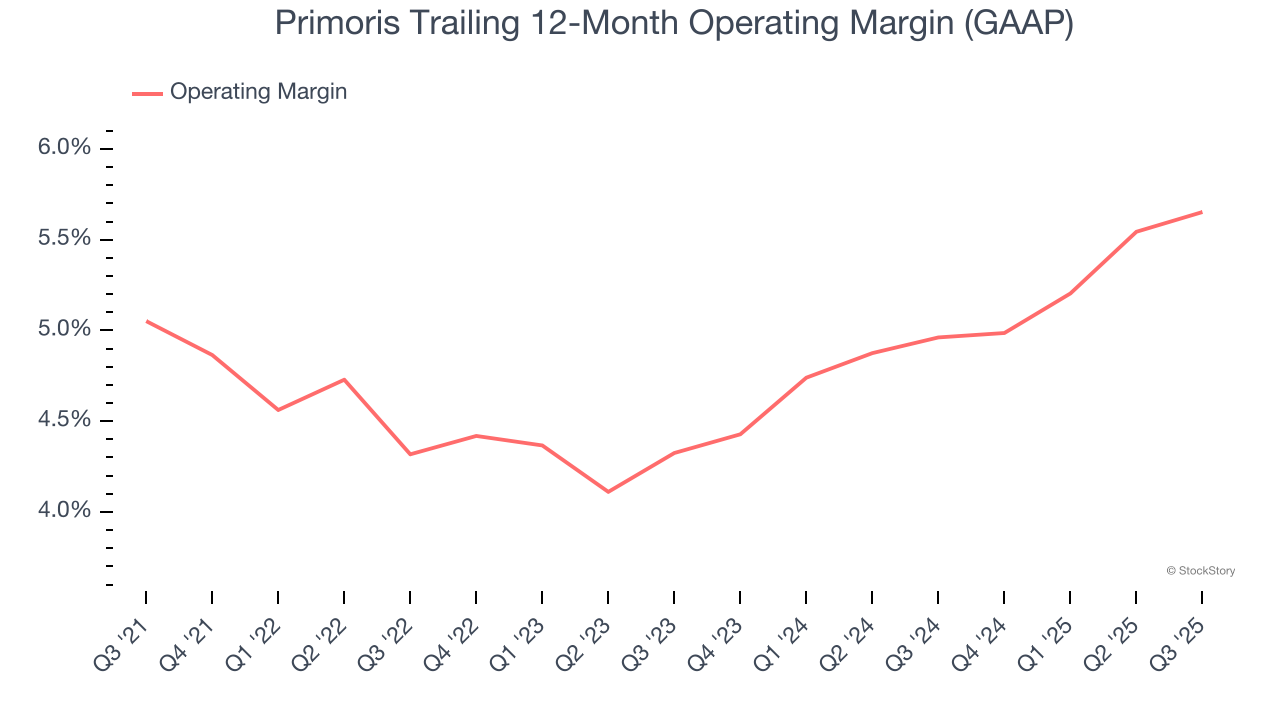
In Q3, Primoris generated an operating margin profit margin of 6.3%, in line with the same quarter last year. This indicates the company’s cost structure has recently been stable.
Earnings Per Share
We track the long-term change in earnings per share (EPS) for the same reason as long-term revenue growth. Compared to revenue, however, EPS highlights whether a company’s growth is profitable.
Primoris’s EPS grew at an astounding 22.8% compounded annual growth rate over the last five years, higher than its 17.1% annualized revenue growth. However, we take this with a grain of salt because its operating margin didn’t improve and it didn’t repurchase its shares, meaning the delta came from reduced interest expenses or taxes.
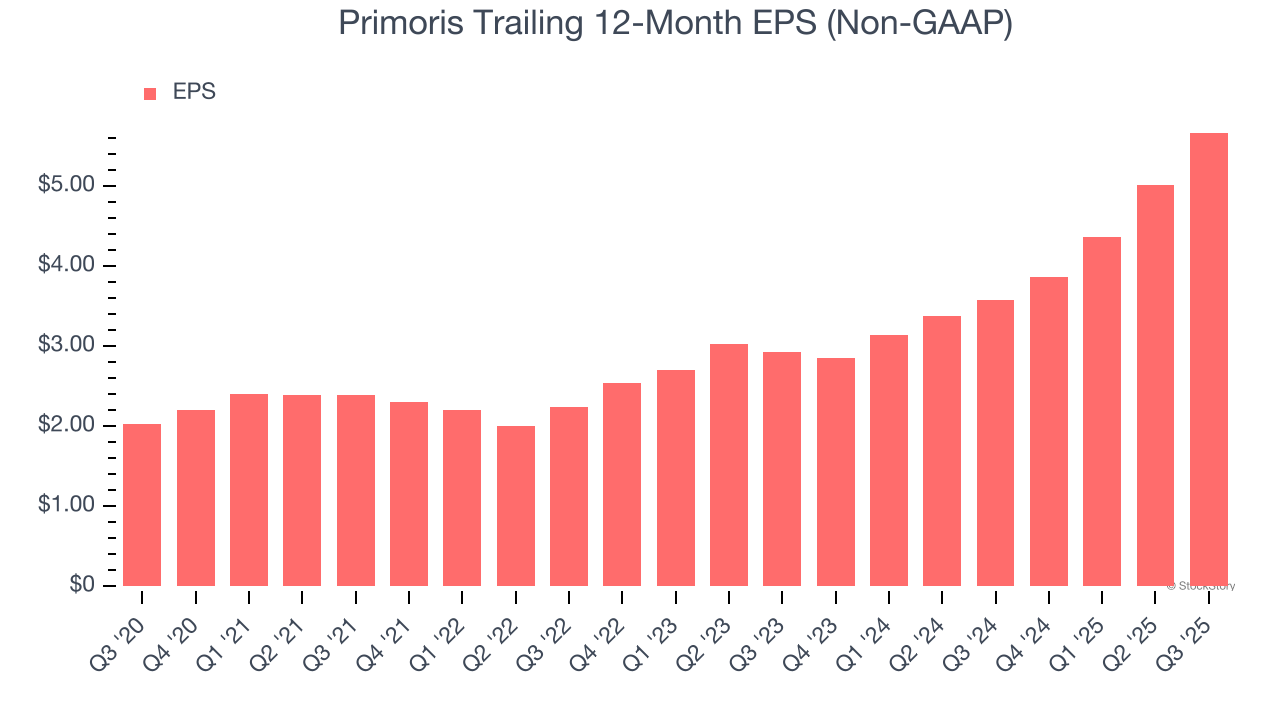
Like with revenue, we analyze EPS over a more recent period because it can provide insight into an emerging theme or development for the business.
For Primoris, its two-year annual EPS growth of 39.1% was higher than its five-year trend. We love it when earnings growth accelerates, especially when it accelerates off an already high base.
In Q3, Primoris reported adjusted EPS of $1.88, up from $1.22 in the same quarter last year. This print easily cleared analysts’ estimates, and shareholders should be content with the results. Over the next 12 months, Wall Street expects Primoris’s full-year EPS of $5.67 to shrink by 4.1%.
Key Takeaways from Primoris’s Q3 Results
It was good to see Primoris beat analysts’ EPS expectations this quarter. We were also excited its EBITDA outperformed Wall Street’s estimates by a wide margin. Zooming out, we think this was a good print with some key areas of upside. The stock remained flat at $144.01 immediately after reporting.
Primoris put up rock-solid earnings, but one quarter doesn’t necessarily make the stock a buy. Let’s see if this is a good investment. We think that the latest quarter is only one piece of the longer-term business quality puzzle. Quality, when combined with valuation, can help determine if the stock is a buy. We cover that in our actionable full research report which you can read here, it’s free for active Edge members.
